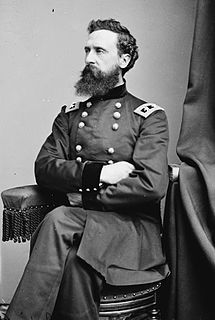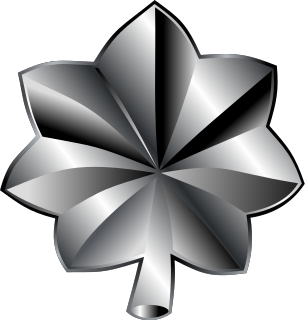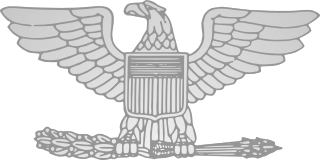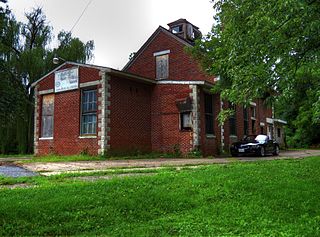
George Sykes was a career United States Army officer and a Union General during the American Civil War.
The V Corps was a unit of the Union Army of the Potomac during the American Civil War.

The Battle of Haw's Shop or Enon Church was fought on May 28, 1864, in Hanover County, Virginia, as part of Union Lt. Gen. Ulysses S. Grant's Overland Campaign against Confederate Gen. Robert E. Lee's Army of Northern Virginia during the American Civil War.

Samuel Wylie Crawford was a United States Army surgeon and a Union general in the American Civil War.

John Curtis Caldwell was a teacher, a Union general in the American Civil War, and an American diplomat.

John Henry Hobart Ward, most commonly referred to as J.H. Hobart Ward, was a career United States Army soldier who fought in the Mexican–American War and served in the New York state militia. He also served as a Union general during the American Civil War.

Cadmus Marcellus Wilcox was a career United States Army officer who served in the Mexican–American War and also was a Confederate general during the American Civil War.
John Mercer Brockenbrough was a farmer and a Confederate colonel in the American Civil War.

George Jerrison Stannard was a Vermont farmer, teacher, governmental official and Union general in the American Civil War.

During the second day of the Battle of Gettysburg Confederate Gen. Robert E. Lee attempted to capitalize on his first day's success. He launched the Army of Northern Virginia in multiple attacks on the flanks of the Union Army of the Potomac, commanded by Maj. Gen. George G. Meade. The assaults were unsuccessful, and resulted in heavy casualties for both sides.

On the third day of the Battle of Gettysburg during the disastrous infantry assault nicknamed Pickett's Charge, there were two cavalry battles: one approximately three miles (5 km) to the east, in the area known today as East Cavalry Field, the other southwest of the [Big] Round Top mountain.
The Philadelphia Brigade was a Union Army brigade that served in the American Civil War. It was raised primarily in the city of Philadelphia, Pennsylvania, with the exception of the 106th regiment which contained men from Lycoming and Bradford counties.

George Ashworth Cobham Jr. commanded a regiment in the American Civil War and rose to brigade command before being killed in battle.
Sidney Burbank served as an officer in the regular army before and during the American Civil War. For a time he led a brigade in the Army of the Potomac.

Joseph Washington Fisher was a Pennsylvania politician and soldier who commanded a brigade of the Pennsylvania Reserves in some of the most important battles of the Army of the Potomac during the American Civil War.
William Root Brewster was an officer in the Union Army during the American Civil War who commanded a regiment in the famed Excelsior Brigade of the Army of the Potomac. He later commanded the brigade, including at the Battle of Gettysburg where Brewster and his men were overrun by Confederates while defending the Emmitsburg Road position of the III Corps not far from the Peach Orchard.

William Stowell Tilton was an American businessman and soldier who led a regiment, and occasionally a brigade, in the Army of the Potomac during the American Civil War. He and his men were heavily engaged in the Battle of Gettysburg, where Tilton's performance created controversy.

Ariovistus Pardee Jr. was an officer in the Union Army during the American Civil War. He rose to fame during the Battle of Gettysburg, where he led the defense of a portion of Culp's Hill on July 3, 1863. A monument on the Gettysburg Battlefield commemorates the spot as "Pardee Field."

Daniel Davidson Bidwell was a civic leader in Buffalo, New York, before the outbreak of the American Civil War. He enlisted early in the war and then was appointed colonel of a regiment of infantry. He was promoted to general in command of a brigade in early 1864, leading it until he was mortally wounded at the Battle of Cedar Creek.


























